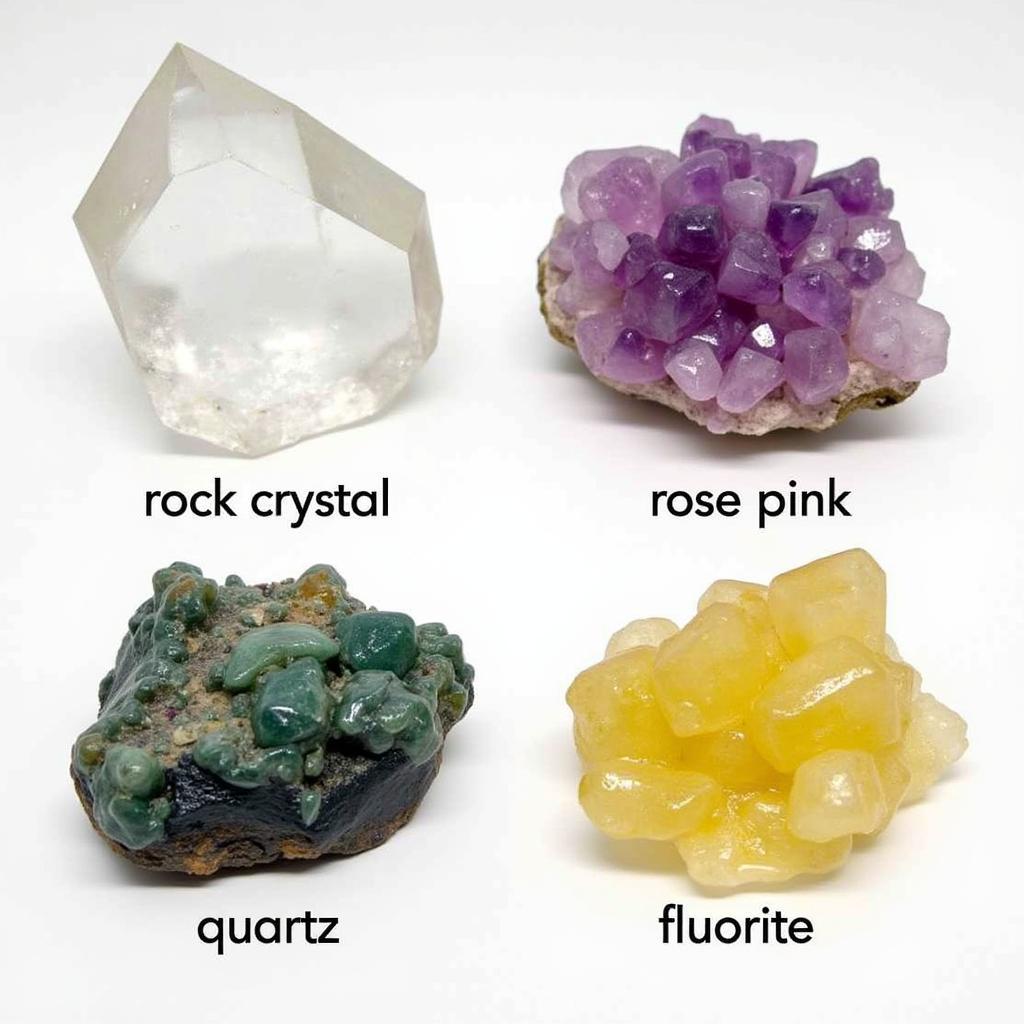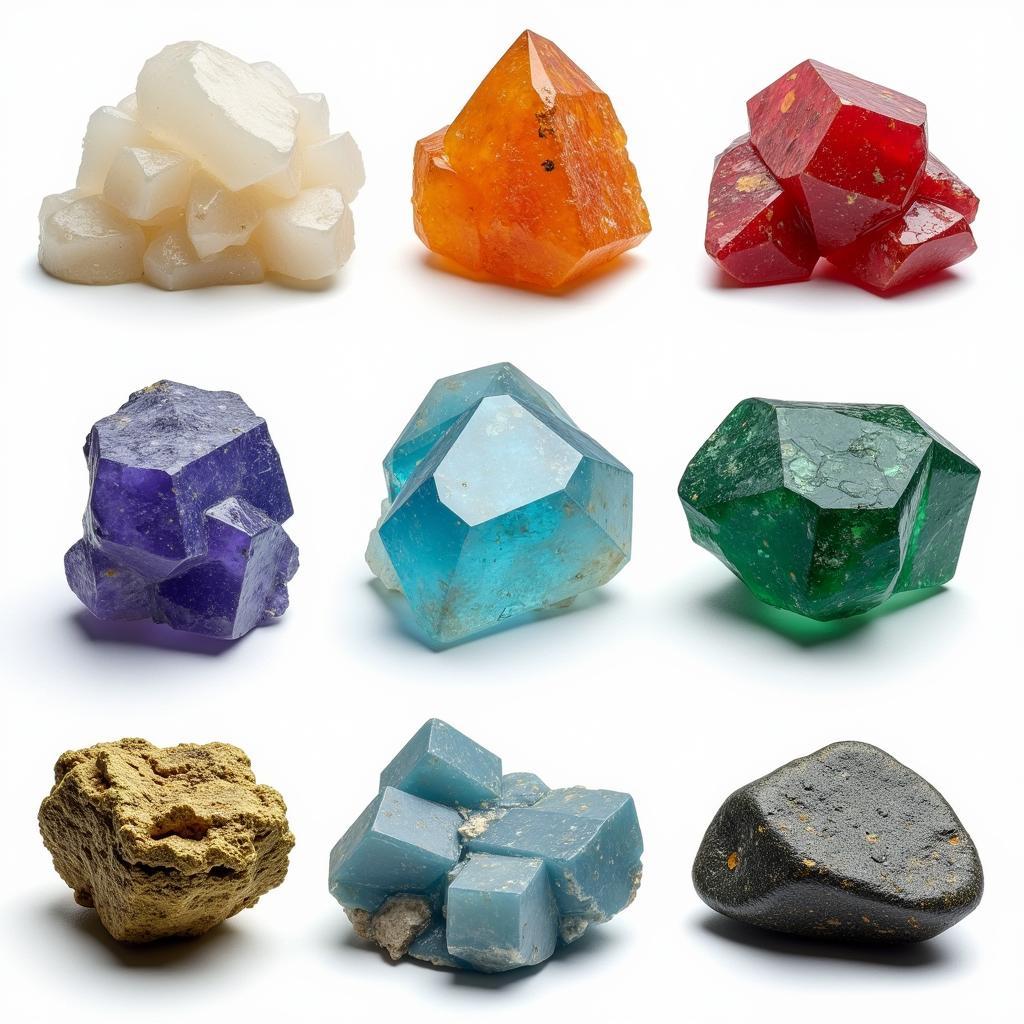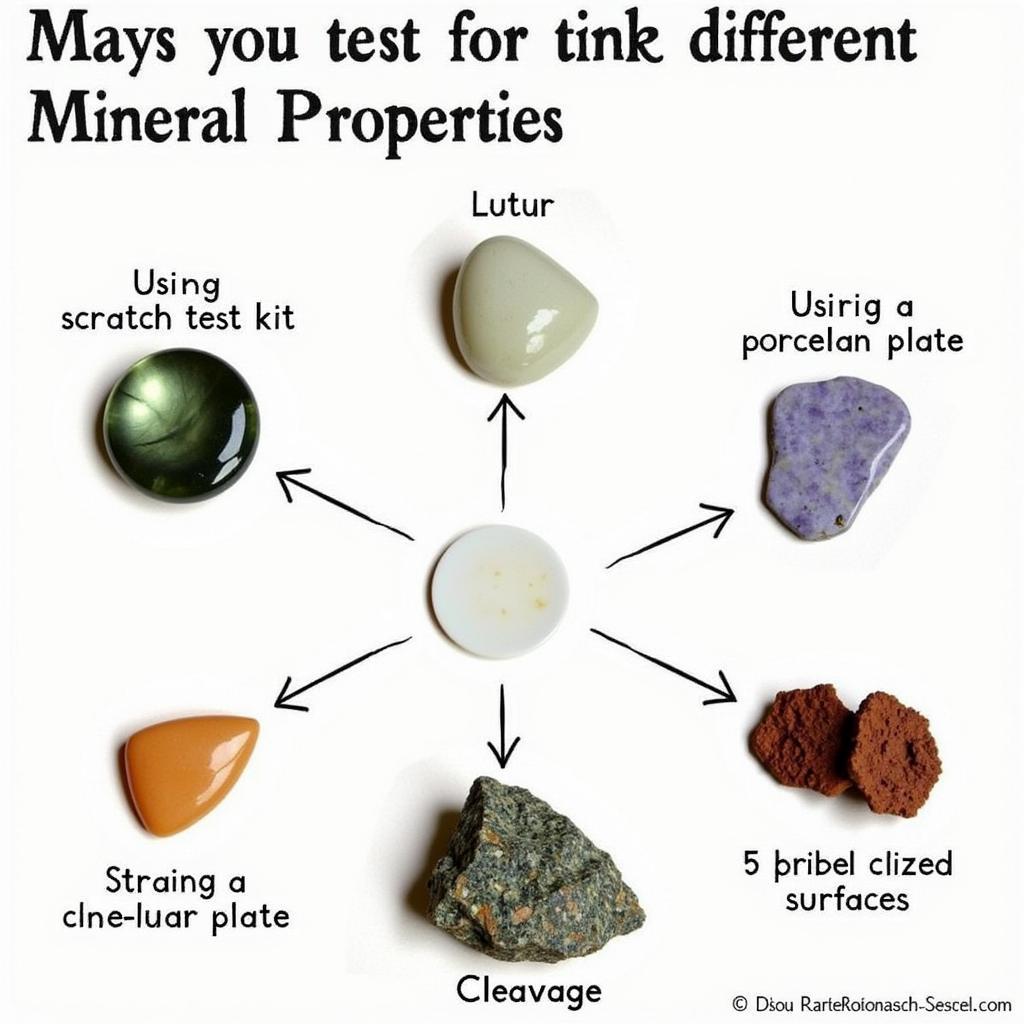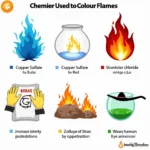Minerals are often grouped based on their chemical composition, but color can also be a helpful, albeit sometimes misleading, characteristic for initial identification. Which list of minerals is grouped based on color? Let’s explore this fascinating aspect of mineralogy and discover how color can play a role in mineral classification.
Using Color to Identify Minerals: A Helpful Starting Point
While not a definitive identifier, color can be a useful first step in mineral identification. Many minerals exhibit characteristic colors due to their chemical composition and crystal structure. For instance, the vibrant green of malachite or the deep blue of azurite often points towards the presence of copper. However, impurities or variations in crystal structure can cause color variations within the same mineral species.
 Examples of Mineral Color Variations
Examples of Mineral Color Variations
Understanding the Limitations of Color
It’s crucial to understand that relying solely on color for mineral identification can be misleading. Many minerals share similar colors. For example, both gold and pyrite (fool’s gold) exhibit a metallic yellow hue. Therefore, color should be used in conjunction with other physical properties like hardness, luster, streak, and cleavage to achieve a more accurate identification.
Common Mineral Groups and Their Characteristic Colors
While minerals aren’t formally grouped based solely on color, recognizing common color associations within certain mineral groups can be helpful. For example, many sulfide minerals, like galena and sphalerite, display metallic luster and often appear in shades of gray, black, or silver. Similarly, many carbonate minerals, such as calcite and dolomite, are typically light-colored, ranging from white to gray.
Exploring the Colorful World of Silicate Minerals
Silicate minerals, the most abundant group in Earth’s crust, showcase a wide array of colors. Quartz, a common silicate mineral, can be colorless, pink, purple, or even smoky gray. Feldspars, another major silicate group, are often white, pink, or gray. The vibrant green of olivine, a silicate mineral commonly found in igneous rocks, is another distinctive example.
 Silicate Minerals and Color Variety
Silicate Minerals and Color Variety
Why Chemical Composition is the Primary Classification Method
While color is an observable and often striking characteristic, it’s less reliable than chemical composition for mineral classification. Chemical composition determines the fundamental structure and properties of a mineral, including its potential color. Minerals are organized into classes based on their dominant anion or anionic group, such as oxides, sulfides, silicates, and carbonates. This classification system provides a more robust and scientifically sound framework than color-based grouping.
Beyond Color: Other Diagnostic Properties for Mineral Identification
When identifying minerals, consider these other diagnostic properties:
- Luster: The way a mineral reflects light (metallic, non-metallic)
- Hardness: A mineral’s resistance to scratching (Mohs Hardness Scale)
- Streak: The color of a mineral’s powder
- Cleavage: The way a mineral breaks along flat planes
- Crystal Habit: The characteristic shape of a mineral crystal
 Mineral Identification Using Diagnostic Properties
Mineral Identification Using Diagnostic Properties
Conclusion: Color as a Clue, Not a Conclusion
So, which list of minerals is grouped based on color? While some informal groupings might exist for educational purposes, no official scientific classification of minerals relies solely on color. Color serves as a helpful initial clue, but thorough mineral identification requires examining a combination of physical and chemical properties. By understanding the limitations and potential of color as a diagnostic tool, we can appreciate the complexities and beauty of the mineral world.
FAQ
-
Can two different minerals have the same color?
Yes, many minerals share similar colors, making color alone unreliable for identification. -
What causes minerals to have different colors?
Color is primarily determined by a mineral’s chemical composition and crystal structure. Trace elements and impurities can also influence color. -
Is color a reliable way to identify minerals?
No, color should be used in conjunction with other physical properties for accurate mineral identification. -
What are some other properties used to identify minerals besides color?
Other diagnostic properties include luster, hardness, streak, cleavage, and crystal habit. -
Why is chemical composition more important than color for classifying minerals?
Chemical composition determines the fundamental structure and properties of a mineral, providing a more robust classification system than color. -
What are some common mineral groups?
Common mineral groups include silicates, oxides, sulfides, carbonates, and halides. -
Where can I learn more about mineral identification?
Many online resources, books, and field guides provide comprehensive information about mineral identification.
Need assistance with color selection, home painting, or design projects? Contact us: Phone: 0373298888, Email: [email protected], or visit us at 86 Cầu Giấy, Hanoi. Our customer service team is available 24/7.

